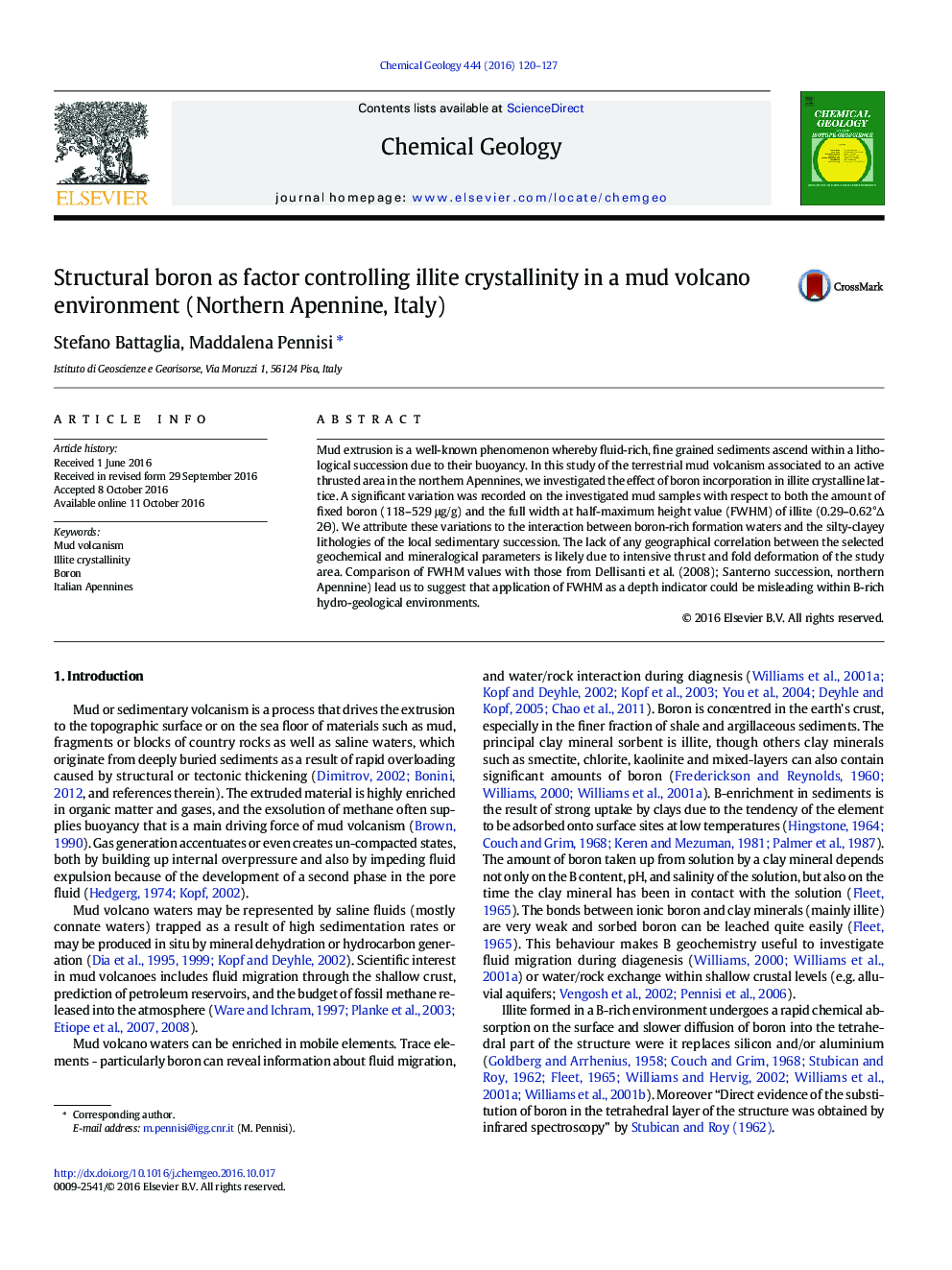| Article ID | Journal | Published Year | Pages | File Type |
|---|---|---|---|---|
| 4698175 | Chemical Geology | 2016 | 8 Pages |
•A boron-rich environment associated to mud volcanoes in the Northern Apennines is investigated.•In mud samples boron content in the illite lattice correlates inversely with the illite KI Index.•Estimates are furnished of the relative depths of the source areas of the studied mud volcanoes.•Using the KI index as an absolute depth indicator could be misleading in environments where B-rich formation waters occur
Mud extrusion is a well-known phenomenon whereby fluid-rich, fine grained sediments ascend within a lithological succession due to their buoyancy. In this study of the terrestrial mud volcanism associated to an active thrusted area in the northern Apennines, we investigated the effect of boron incorporation in illite crystalline lattice. A significant variation was recorded on the investigated mud samples with respect to both the amount of fixed boron (118–529 μg/g) and the full width at half-maximum height value (FWHM) of illite (0.29–0.62°Δ 2Θ). We attribute these variations to the interaction between boron-rich formation waters and the silty-clayey lithologies of the local sedimentary succession. The lack of any geographical correlation between the selected geochemical and mineralogical parameters is likely due to intensive thrust and fold deformation of the study area. Comparison of FWHM values with those from Dellisanti et al. (2008); Santerno succession, northern Apennine) lead us to suggest that application of FWHM as a depth indicator could be misleading within B-rich hydro-geological environments.
Graphical abstractFigure optionsDownload full-size imageDownload as PowerPoint slide
